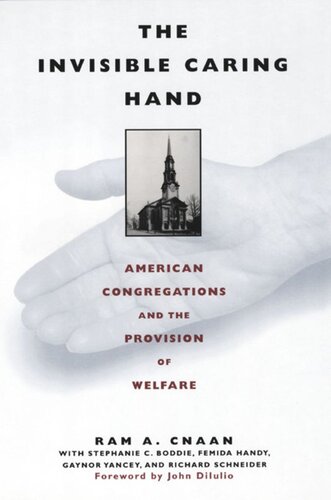

Most ebook files are in PDF format, so you can easily read them using various software such as Foxit Reader or directly on the Google Chrome browser.
Some ebook files are released by publishers in other formats such as .awz, .mobi, .epub, .fb2, etc. You may need to install specific software to read these formats on mobile/PC, such as Calibre.
Please read the tutorial at this link: https://ebookbell.com/faq
We offer FREE conversion to the popular formats you request; however, this may take some time. Therefore, right after payment, please email us, and we will try to provide the service as quickly as possible.
For some exceptional file formats or broken links (if any), please refrain from opening any disputes. Instead, email us first, and we will try to assist within a maximum of 6 hours.
EbookBell Team

5.0
40 reviewsBased on in-depth interviews with clergy and lay leaders in 251 congregations nationwide, it reveals the many ways in which congregations are already working, beneath the radar, to care for people in need. This ground-breaking volume will provide much-sought empirical data to social scientists, religious studies scholars, and those involved in the debates over the role of faith-based organizations in faith-based services, as well as to clergy and congregation members themselves.
Popular calls to transform our current welfare system and supplant it with effective and inexpensive faith-based providers are gaining political support and engendering heated debate about the separation of church and state. Yet we lack concrete information from which to anticipate how such initiatives might actually work if adopted.
Despite the assumption that congregations can help many needy people in our society, it remains to be seen how extensive they wish their involvement to be, or if they have the necessary tools to become significant providers in the social service arena. Moreover, how will such practices, which will move faith-based organizations towards professionalization, ultimately affect the spirit of volunteerism now prevalent in America's religious institutions?
We lack sufficient knowledge about congregational life and its ability to play a key role in social service provision. The Invisible Caring Hand attempts to fill that void. Based on in-depth interviews with clergy and lay leaders in 251 congregations nationwide, it reveals the many ways in which congregations are already working, beneath the radar, to care for people in need. This ground-breaking volume will provide much-sought empirical data to social scientists, religious studies scholars, and those involved in the debates over the role of faith-based organizations in faith-based services, as well as to clergy and congregation members themselves.